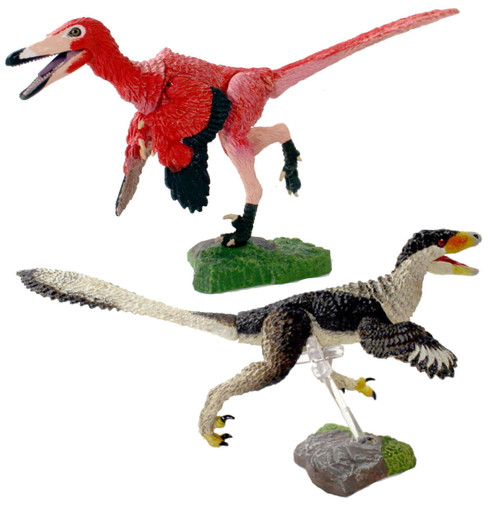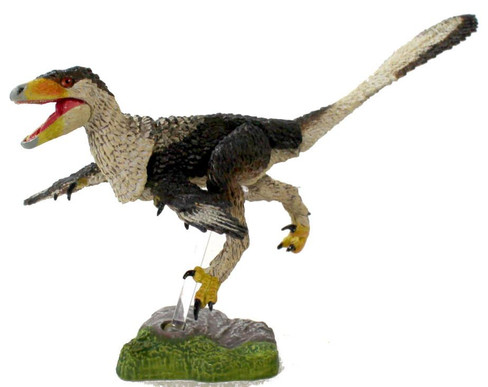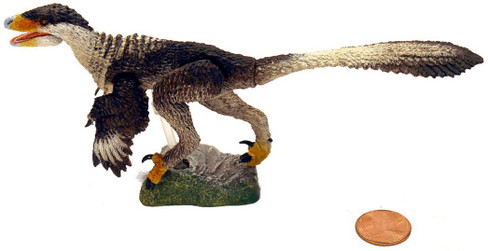Beasts of the Mesozoic Raptor Western 2-Pack
Beasts of the Mesozoic Raptor Western 2-Pack Manufacturer Information:
Buitreraptor gonzalezorum (vulture raider) was a small predatory dromaeosaurid from the Late Cretaceous of Argentina. Known for it's elongated head with many small teeth as well as for it's very long and thin three-fingered hands, it likely hunted small animals.
Stenonychosaurus inequalis (narrow claw lizard) is a troodontid theropod from the Late Cretaceous Alberta, Canada. It had one of the largest known brains relative to its body mass of any dinosaur. Growing to about 8ft in length, the largest Stenonychosaurus specimens are comparable in size to Deinonychus and Unenlagia. Stenonychosaurus inequalis was reassigned in 1987 to the genus Troodon, and then was reverted back to Stenonychosaurus in 2017.
Each set features 2 raptor figures, each approximately 6? long with 7 points of articulation and includes two bases, multiple posing rods and attachments, collectible trading card, and unique background display insert. Packaging features red-foil printing and art by Shannon Beaumont.
Recommended for ages 15 and up (contains small parts)
Buitreraptor Information:
Buitreraptor (scientifically known as Buitreraptor gonzalezorum) is a genus of theropod dinosaur that lived during the Late Cretaceous period, approximately 90 million years ago. It was a small, feathered dinosaur belonging to the dromaeosaurid family, which also includes famous species like Velociraptor.
Here are some key characteristics and information about Buitreraptor:
Size: Buitreraptor was a relatively small dinosaur, measuring about 2 meters (6.5 feet) in length and weighing around 15 kilograms (33 pounds). It had a slender build with long legs, which suggests it was a fast and agile predator.
Fossils and Discovery: The fossils of Buitreraptor were discovered in the Bajo de la Carpa Formation in Argentina. The type species, Buitreraptor gonzalezorum, was formally described in 2005 by paleontologists Peter Makovicky, Sebastián Apesteguía, and Federico L. Agnolín.
Feathers: Like many other dromaeosaurid dinosaurs, Buitreraptor is believed to have been covered in feathers. These feathers would have provided insulation and may have played a role in display or communication.
Hunting and Diet: Buitreraptor was a carnivorous dinosaur, meaning it primarily ate meat. Its diet likely consisted of small vertebrates, insects, and other small prey. With its sharp teeth and claws, it was well adapted for hunting and catching its meals.
Behavior: Due to its dromaeosaurid characteristics, it is widely believed that Buitreraptor was an active predator that relied on its speed and agility to catch prey. Its long, slender tail may have acted as a stabilizer, aiding in balance during fast maneuvers.
Taxonomy: Buitreraptor belongs to the group of dinosaurs known as the Paraves, which includes dromaeosaurids, troodontids, and modern birds. This group is characterized by their feathers and other avian-like features.
Significance: Buitreraptor is an important dinosaur in the study of bird evolution and the transition from non-avian dinosaurs to modern birds. Its discovery and characteristics have provided valuable insights into the early evolution of feathers and flight-related adaptations in dinosaurs.
Hand Painted. Product Material: PVC
Product Code: #60901by Beasts of the Mesozoic


















